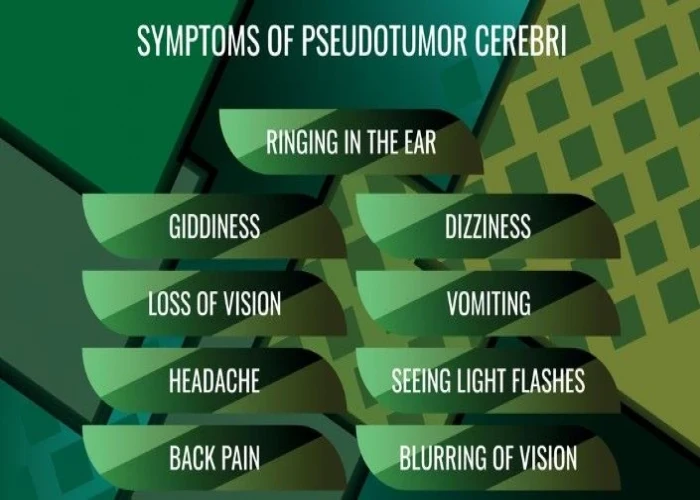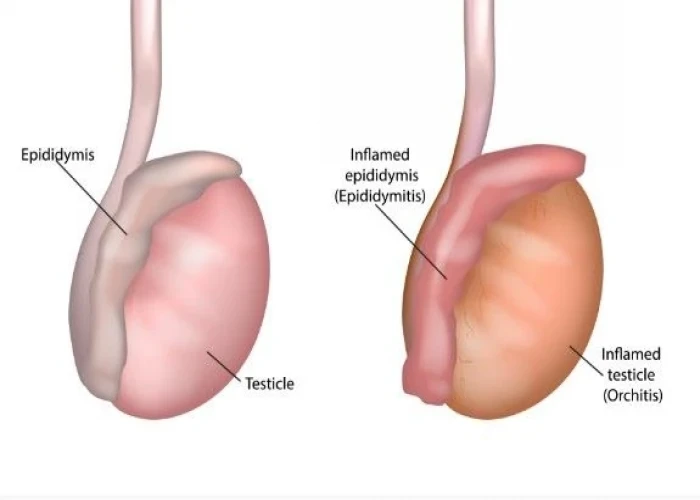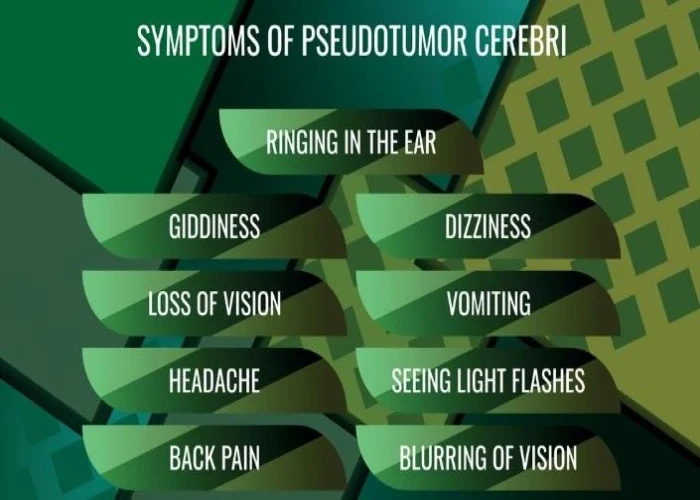 Welcome
Welcome
“May all be happy, may all be healed, may all be at peace and may no one ever suffer."
Pseudotumor cerebri (idiopathic intracranial hypertension)

Pseudotumor cerebri, also known as idiopathic intracranial hypertension (IIH), is a condition characterized by increased pressure within the skull, which can lead to symptoms such as headaches, visual changes, and ringing in the ears. The condition is called "pseudotumor" because it can mimic the symptoms of a brain tumor, even though there is no actual tumor present.
The exact cause of pseudotumor cerebri is unknown, but it is thought to be related to an imbalance in the production and absorption of cerebrospinal fluid (CSF), which circulates around the brain and spinal cord. Certain medications, such as tetracyclines and corticosteroids, as well as conditions such as obesity and hormonal imbalances, may also increase the risk of developing pseudotumor cerebri.
Symptoms of pseudotumor cerebri can include headaches, often with a pulsating quality, visual changes such as double vision or blurry vision, ringing in the ears (tinnitus), and nausea or vomiting. In severe cases, the increased pressure in the skull can lead to swelling of the optic nerves, which can cause vision loss.
Diagnosis of pseudotumor cerebri typically involves a thorough neurological examination, as well as imaging studies such as magnetic resonance imaging (MRI) or computed tomography (CT) scans to rule out other causes of the symptoms. A lumbar puncture, also known as a spinal tap, may also be performed to measure the pressure of the CSF.
Treatment of pseudotumor cerebri may involve medications to reduce the production of CSF, such as acetazolamide, and/or procedures to remove excess CSF, such as a spinal tap or placement of a shunt to drain the fluid from the brain. Weight loss and management of underlying medical conditions, such as hormonal imbalances or sleep apnea, may also be recommended to help reduce the symptoms of pseudotumor cerebri.
Untreated pseudotumor cerebri can lead to permanent vision loss and other complications, so it is important to seek medical attention promptly if you experience any symptoms suggestive of the condition.
Research Papers
Disease Signs and Symptoms
- Headaches
- Nausea or vomiting
- Dizziness (vertigo)
- Blindness (Vision loss)
- Double vision (diplopia)
- Back pain
- Neck pain
Disease Causes
Pseudotumor cerebri (idiopathic intracranial hypertension)
The cause of pseudotumor cerebri is unknown. If a cause is determined, the condition is called secondary intracranial hypertension, rather than idiopathic.
Your brain and spinal cord are surrounded by cerebrospinal fluid, which cushions these vital tissues from injury. This fluid is produced in the brain and eventually is absorbed into the bloodstream at a rate that usually allows the pressure in your brain to remain constant.
The increased intracranial pressure of pseudotumor cerebri might result from a problem in this absorption process.
Disease Prevents
Disease Treatments
The goal of pseudotumor cerebri treatment is to improve your symptoms and keep your eyesight from worsening.
If you're obese, your doctor might recommend a low-sodium weight-loss diet to help improve your symptoms. You might work with a dietitian to help with your weight-loss goals. Some people benefit from weight-loss programs or gastric surgery.
Medications
- Glaucoma drugs. One of the first drugs usually tried is acetazolamide, a glaucoma drug. This medication might reduce the production of cerebrospinal fluid and reduce symptoms.
- Possible side effects include stomach upset, fatigue, tingling of fingers, toes and mouth, and kidney stones.
- Other diuretics. If acetazolamide alone isn't effective, it's sometimes combined with another diuretic, which reduces fluid retention by increasing urine output.
- Migraine medications. These drugs can sometimes ease the severe headaches that often accompany pseudotumor cerebri.
Surgery
If your vision worsens, surgery to reduce the pressure around your optic nerve or to decrease the intracranial pressure might be necessary.
- Optic nerve sheath fenestration. In this procedure, a surgeon cuts a window into the membrane that surrounds the optic nerve to allow excess cerebrospinal fluid to escape.
- Vision stabilizes or improves in most cases. Most people who have this procedure done on one eye notice a benefit for both eyes. However, this surgery isn't always successful and can increase vision problems.
- Spinal fluid shunt. In another type of surgery, your doctor inserts a long, thin tube (shunt) into your brain or lower spine to help drain excess cerebrospinal fluid. The tubing is burrowed under your skin to your abdomen, where the shunt releases the excess fluid.
- A shunt is generally considered only if other treatments haven't relieved your condition. Shunts can clog and often require other surgeries to keep them working. Complications can include low-pressure headaches and infections.
- Venous sinus stenting. This relatively new procedure is rarely used. It involves placing a stent in one of the larger veins in the head to increase the blood's ability to flow. More study is needed to determine the benefits and risks of this procedure.
Once you've had pseudotumor cerebri, you'll need to have your vision checked regularly to monitor changes.
Disease Diagnoses
Disease Allopathic Generics
Disease Ayurvedic Generics
Disease Homeopathic Generics
Disease yoga
Pseudotumor cerebri (idiopathic intracranial hypertension) and Learn More about Diseases

Lupus nephritis

Hypoplastic left heart syndrome

Castleman disease

Orchitis

Acute liver failure

Subarachnoid hemorrhage

Myoclonus

Rectovaginal fistula
pseudotumor cerebri, idiopathic intracranial hypertension, সিউডোটিউমার সেরিব্রি, ইডিওপ্যাথিক ইন্ট্রাক্রানিয়াল হাইপারটেনশন
To be happy, beautiful, healthy, wealthy, hale and long-lived stay with DM3S.
